Abstract
The inexpensive nature of the peak flow rate (PFR) makes it a suitable test of ventilatory function for use in some parts of Africa, where medical facilities are still poor. In order to establish standard values for PFR in Nigeria, anthropometric measurements, lung volumes, and PFR were obtained from 142 men and 88 women, all of whom were healthy Nigerians. The mean values of PFR were 482·1 1/min (±83·3) for males (average age 34·9 years) and 385·6 1/min (±65·7) for females (average age 29·4 years), both means being significantly lower than corresponding means of predicted values calculated from formulae based on previously reported studies of Caucasians. PFR was correlated with age, various physical measurements, and lung volumes. The combination of age and height gave the regression equation for predicting PFR with the lowest standard error of estimates; and virtually all lung volumes measured correlated significantly with PFR. In 16 adult Nigerian asthmatics, PFR correlated significantly with vital capacity, forced expiratory volume (1 second), and expiratory reserve volume; it was highest in those who had no symptomatic or spirometric signs of any ventilatory defect, and lowest in those who had signs of both obstructive and restrictive defects.
Full text
PDF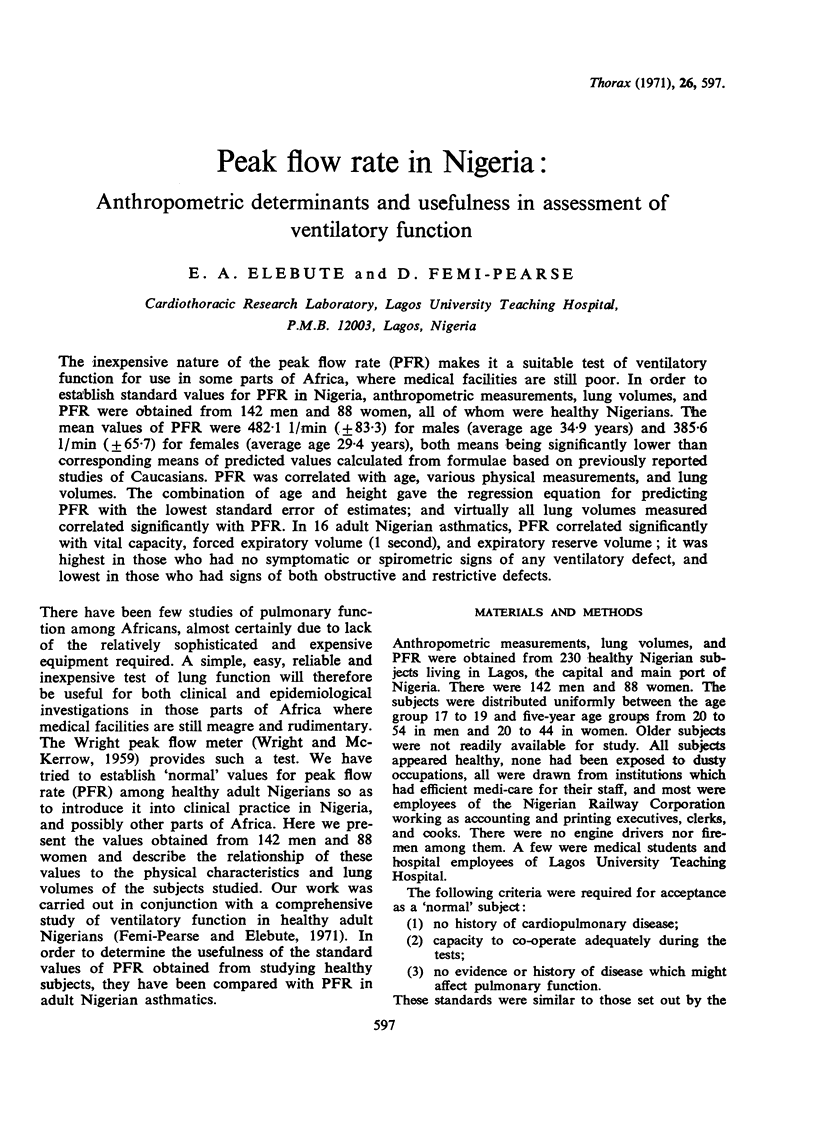
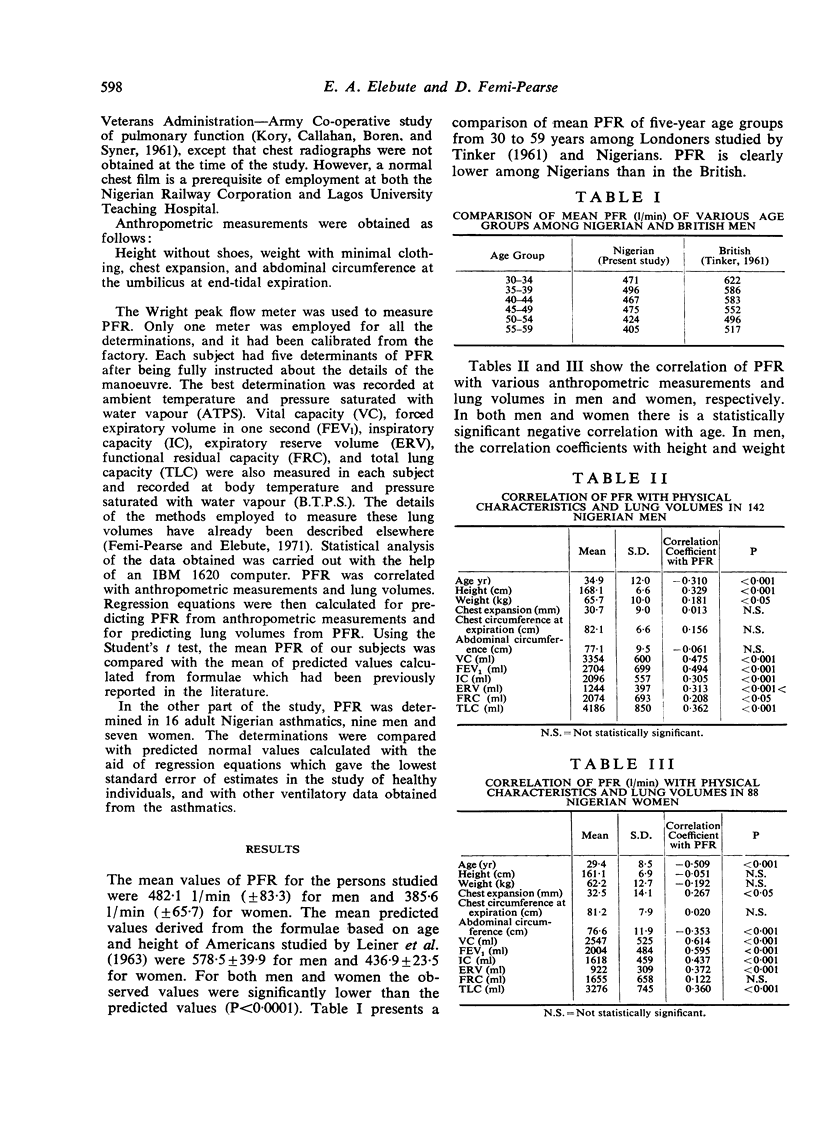
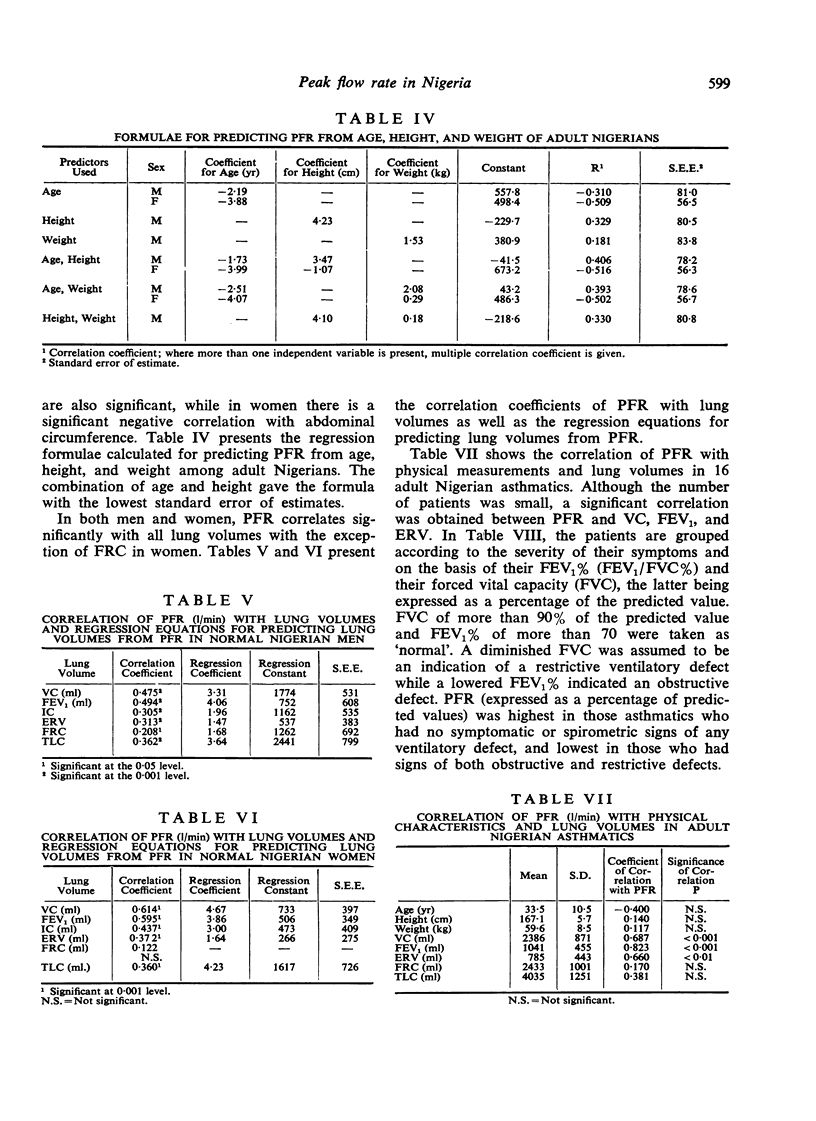
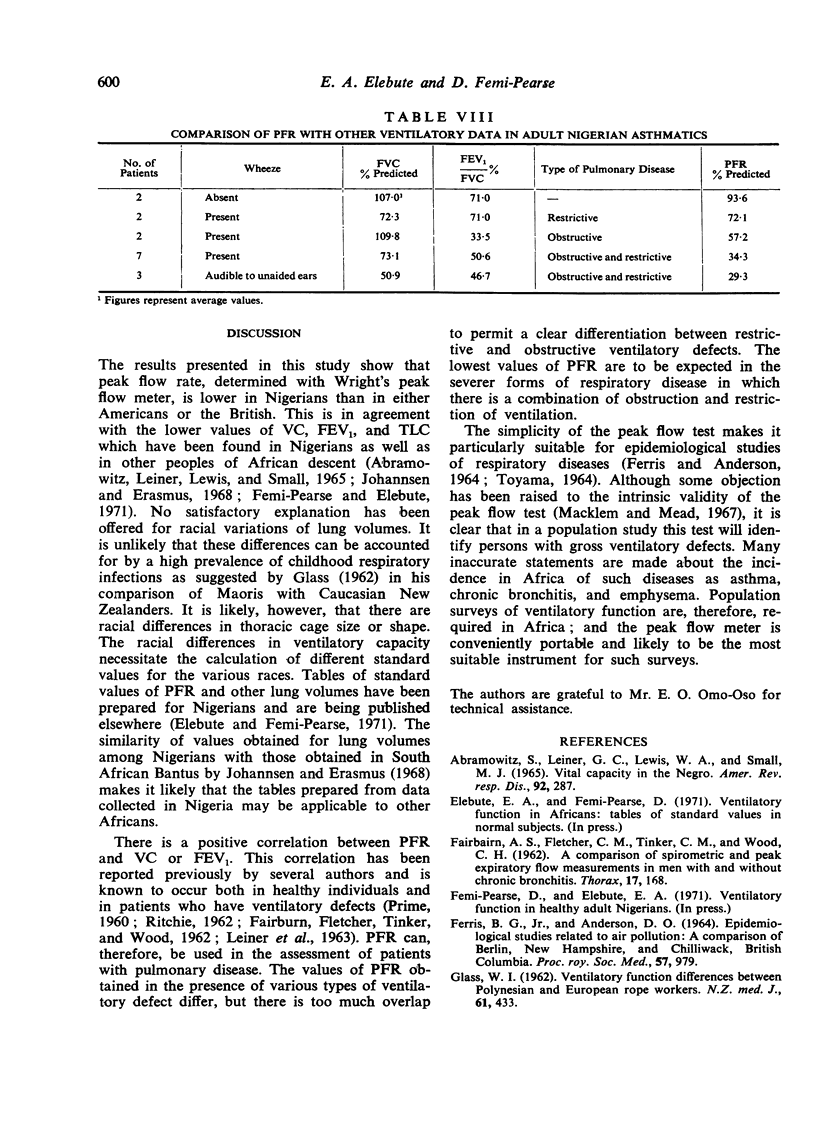
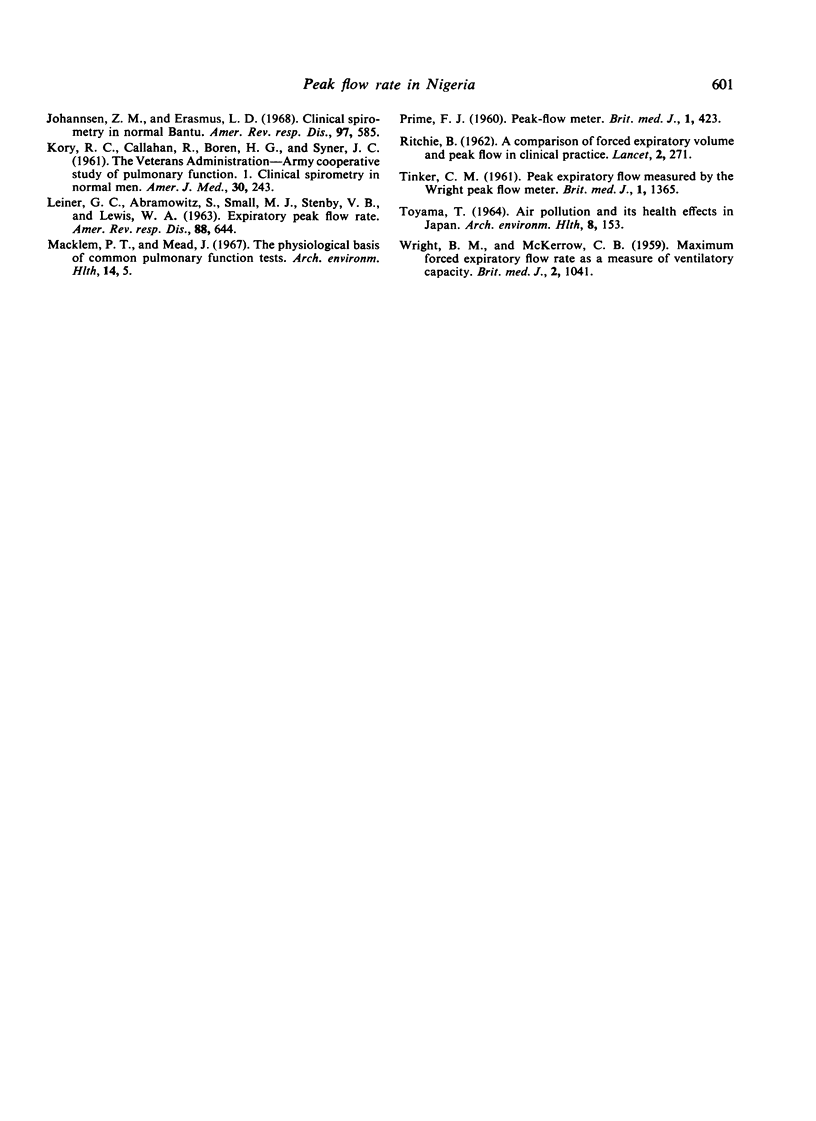
Selected References
These references are in PubMed. This may not be the complete list of references from this article.
- ABRAMOWITZ S., LEINER G. C., LEWIS W. A., SMALL M. J. VITAL CAPACITY IN THE NEGRO. Am Rev Respir Dis. 1965 Aug;92:287–292. doi: 10.1164/arrd.1965.92.2.287. [DOI] [PubMed] [Google Scholar]
- FAIRBAIRN A. S., FLETCHER C. M., TINKER C. M., WOOD C. H. A comparison of spirometric and peak expiratory flow measurements in men with and without chronic bronchitis. Thorax. 1962 Jun;17:168–174. doi: 10.1136/thx.17.2.168. [DOI] [PMC free article] [PubMed] [Google Scholar]
- FERRIS B. G., Jr, ANDERSON D. O. EPIDEMIOLOGICAL STUDIES RELATED TO AIR POLLUTION: A COMPARISON OF BERLIN, NEW HAMPSHIRE, AND CHILLIWACK, BRITISH COLUMBIA. Proc R Soc Med. 1964 Oct;57:SUPPL–SUPPL:983. [PMC free article] [PubMed] [Google Scholar]
- GLASS W. I. Ventilatory function differences between Polynesian and European rope workers. N Z Med J. 1962 Sep;61:433–444. [PubMed] [Google Scholar]
- Johannsen Z. M., Erasmus L. D. Clinical spirometry in normal Bantu. Am Rev Respir Dis. 1968 Apr;97(4):585–597. doi: 10.1164/arrd.1968.97.4.585. [DOI] [PubMed] [Google Scholar]
- KORY R. C., CALLAHAN R., BOREN H. G., SYNER J. C. The Veterans Administration-Army cooperative study of pulmonary function. I. Clinical spirometry in normal men. Am J Med. 1961 Feb;30:243–258. doi: 10.1016/0002-9343(61)90096-1. [DOI] [PubMed] [Google Scholar]
- LEINER G. C., ABRAMOWITZ S., SMALL M. J., STENBY V. B., LEWIS W. A. EXPIRATORY PEAK FLOW RATE. STANDARD VALUES FOR NORMAL SUBJECTS. USE AS A CLINICAL TEST OF VENTILATORY FUNCTION. Am Rev Respir Dis. 1963 Nov;88:644–651. doi: 10.1164/arrd.1963.88.5.644. [DOI] [PubMed] [Google Scholar]
- Macklem P. T., Mead J. The physiological basis of common pulmonary function tests. Arch Environ Health. 1967 Jan;14(1):5–9. doi: 10.1080/00039896.1967.10664685. [DOI] [PubMed] [Google Scholar]
- RITCHIE B. A comparison of forced expiratory volume and peak flow in clinical practice. Lancet. 1962 Aug 11;2(7250):271–273. doi: 10.1016/s0140-6736(62)90174-5. [DOI] [PubMed] [Google Scholar]
- TINKER C. M. Peak expiratory flow measured by the Wright peak flow meter. Distribution of values in men aged 30-59 who denied respiratory symptoms. Br Med J. 1961 May 13;1(5236):1365–1366. doi: 10.1136/bmj.1.5236.1365. [DOI] [PMC free article] [PubMed] [Google Scholar]
- TOYAMA T. AIR POLLUTION AND ITS HEALTH EFFECTS IN JAPAN. Arch Environ Health. 1964 Jan;8:153–173. doi: 10.1080/00039896.1964.10663646. [DOI] [PubMed] [Google Scholar]
- WRIGHT B. M., McKERROW C. B. Maximum forced expiratory flow rate as a measure of ventilatory capacity: with a description of a new portable instrument for measuring it. Br Med J. 1959 Nov 21;2(5159):1041–1046. doi: 10.1136/bmj.2.5159.1041. [DOI] [PMC free article] [PubMed] [Google Scholar]


